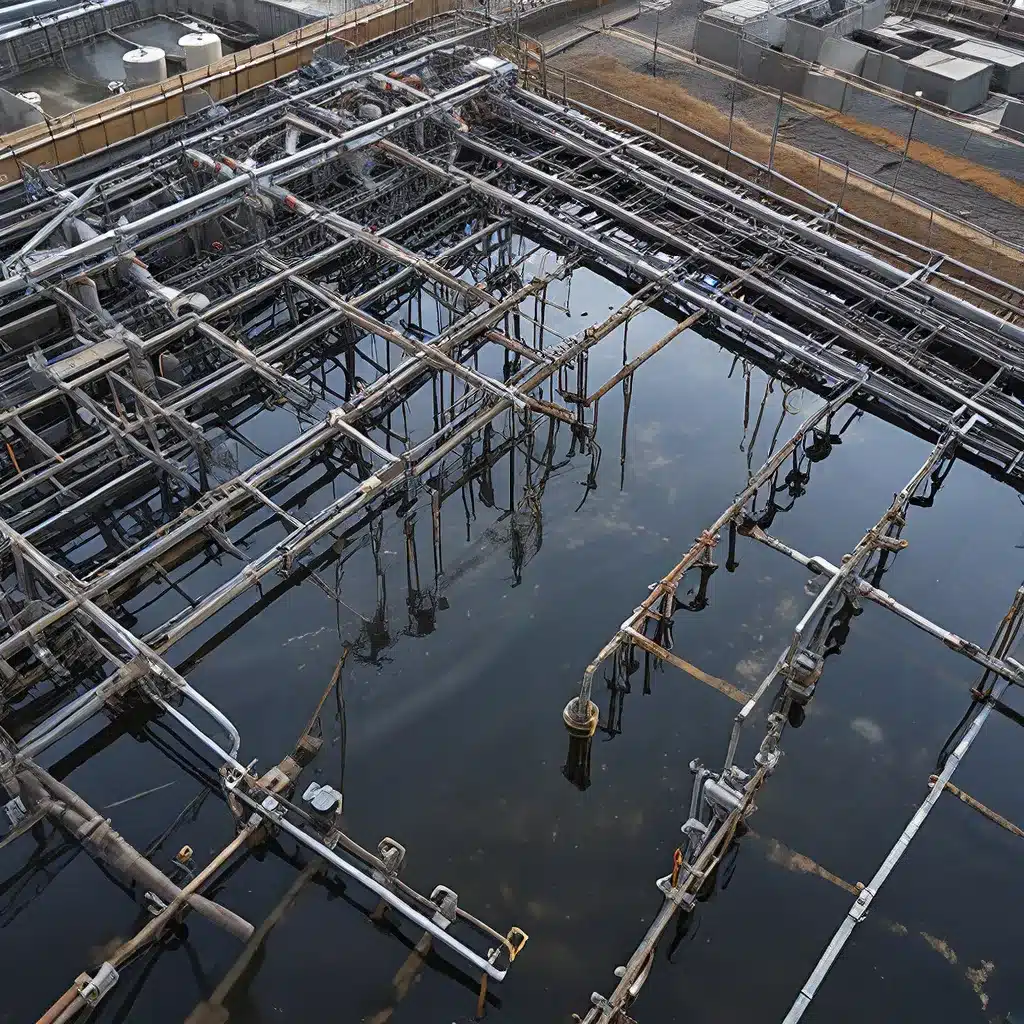
Diving into the Data: How AI and ML are Revolutionizing Wastewater Management
You know, when I first heard about using artificial intelligence (AI) and machine learning (ML) to tackle wastewater treatment, I have to admit, I was a bit skeptical. I mean, these advanced technologies are usually associated with flashy consumer gadgets or high-stakes financial trading – not the gritty world of sewage and sludge, right? But as I dove deeper into the topic, I realized just how transformative these digital innovations can be for the environmental services industry.
It all started when I stumbled upon a fascinating case study from Silo.ai about how a leading environmental consulting firm, Ramboll, is leveraging AI and ML to revolutionize wastewater treatment. The more I learned, the more I became convinced that this is the future – a future where we can harness the power of data and automation to tackle some of the most pressing environmental challenges of our time.
Uncovering Hidden Insights: The Power of Data Analytics
One of the key ways AI and ML are transforming wastewater treatment is through advanced data analytics. As Karna Phd explains, these technologies can help us collect and analyze vast amounts of data from various sources, including drones, satellite imagery, and sensor networks.
Imagine being able to survey an entire region’s worth of wastewater infrastructure, identifying problem areas and potential environmental risks with the click of a button. That’s exactly what Ramboll’s AI-powered system does – by combining historical data, geological information, and real-time monitoring, they can pinpoint the most critical issues and prioritize their remediation efforts accordingly.
But it’s not just about gathering data – it’s about making sense of it all. That’s where machine learning comes in, allowing us to uncover hidden patterns and insights that would be virtually impossible for human analysts to spot. Just think about the sheer volume of data we’re talking about – millions of data points on pipe condition, water quality, energy consumption, and more. ML algorithms can sift through all of that, identifying the key factors that influence system performance and efficiency.
Optimizing Operations: The Role of AI-Powered Decision-Making
Once we have a clear understanding of the data, we can start putting AI and ML to work in optimizing our wastewater treatment operations. Karna Phd gives a great example of how a remediation company can use AI-based optimization algorithms to determine the most efficient sequence for plugging orphaned wells.
Well, the same principles apply to wastewater treatment – by considering factors like infrastructure complexity, equipment availability, and operational constraints, these intelligent systems can help us develop and execute more effective remediation strategies. Imagine being able to simulate different scenarios, testing out various approaches before committing valuable resources. It’s like having a crystal ball that can predict the future and guide us towards the most optimal solutions.
And it’s not just about remediation – AI and ML can also help us streamline day-to-day operations. Imagine a system that can automatically adjust treatment processes in real-time, responding to changes in water quality or environmental conditions. Or one that can identify potential equipment failures before they even happen, allowing us to proactively address issues and minimize downtime.
Embracing the Future: Sustainability and Environmental Protection
As exciting as all these technological advancements are, the true power of AI and ML in wastewater treatment lies in their ability to drive sustainability and environmental protection. After all, what good is all this optimization and efficiency if it’s not ultimately leading to a cleaner, healthier planet?
That’s where the insights from ExxonMobil’s digital innovations come into play. They’ve highlighted how these advanced technologies can help us tackle the “dual challenge” of meeting growing energy demands while minimizing environmental impacts. And the same principle applies to wastewater treatment – by leveraging AI and ML, we can not only streamline our operations but also reduce our ecological footprint.
Imagine being able to detect and prevent methane leaks from wastewater infrastructure, or optimize energy consumption to cut greenhouse gas emissions. Or what about using these technologies to develop more effective methods for removing contaminants and recovering valuable resources from wastewater? The possibilities are truly endless, and the implications for environmental protection are profound.
Overcoming Challenges and Embracing the Future
Of course, as with any transformative technology, there are challenges and hurdles to overcome. Integrating AI and ML into legacy wastewater systems can be complex and time-consuming. And there are always concerns about data privacy, security, and ethical use of these powerful tools.
But the way I see it, the potential benefits far outweigh the challenges. By embracing these digital innovations, we have the opportunity to revolutionize the way we manage our water resources, protect the environment, and ensure a sustainable future for generations to come.
So, what are we waiting for? It’s time to dive in, get our hands dirty (figuratively, of course), and start harnessing the power of AI and ML to transform wastewater treatment. Who knows, we might even have a few laughs along the way – after all, what’s more fun than playing with a bunch of data and algorithms to save the planet? Let’s do this!
Interested in learning more? Check out Inland Waters Inc., a leading provider of comprehensive water treatment and environmental services. They’re at the forefront of this digital revolution, using the latest technologies to deliver innovative solutions for a cleaner, more sustainable future.


